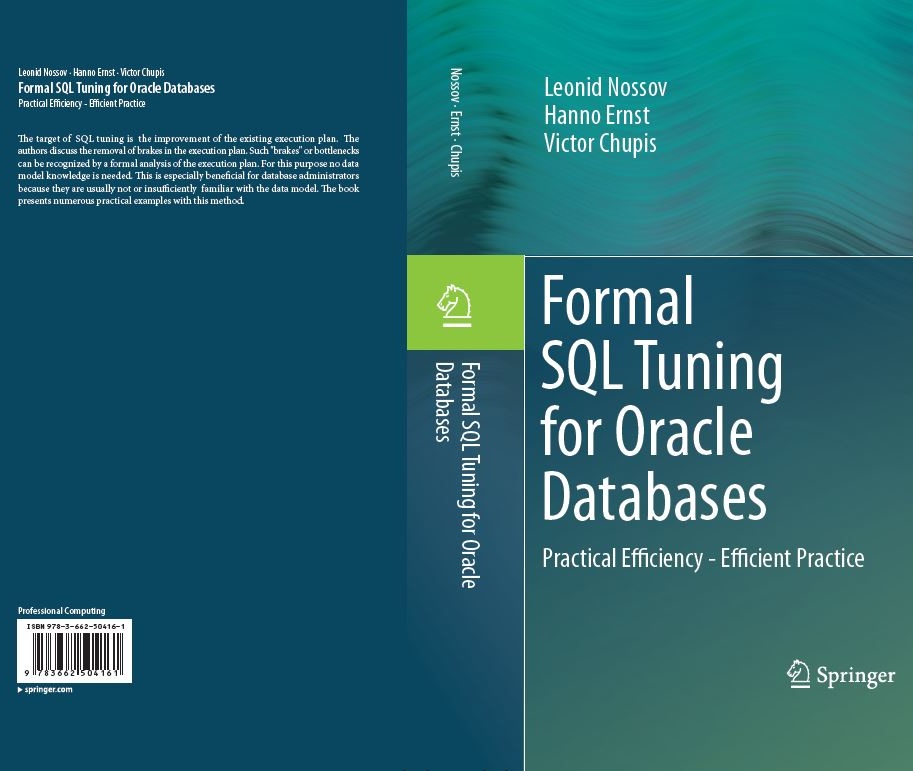User:LNossov
Dear colleagues,
I hate advertising. And what I'm writing here is pure advertising. Why am I doing this? I'll try to explain.
Some months ago I published a book for sql tuning of Oracle databases in German (see [1]).
This book has also been translated and published in English (see for ex. [2] and [3]).
If you have a contract with a publisher you usually cannot expect to earn a lot of money for your book (if you don't write detective stories of course). So that wasn't my aim.
In my book I described a very simple method for sql tuning which was developed directly from practice. You don't need to have any know-how about the data model to apply this method.
In most cases you don't even need to analyze the sql itself but only the execution plan. You have to follow very simple formal rules for detection and elimination of "brakes" in the execution plan.
My aim is to spread this powerful method among database administrators and developers. This method is so easy that even a beginner is able to understand and to apply it successfully in practice.
I have been working for many years at the Oracle corporation. My core area is performance tuning in general and sql tuning in particular.
I'm really doing a lot of performance tuning, mostly when the database is so slow that the customer's usual business is impossible. In such situations one needs a solution as soon as possible.
The classical approach of sql tuning is based on the data model of the application and it's data distribution. But it takes too long to obtain this knowledge if you have a really critical issue.
So I searched for another method and I found it. I noticed that most of the cases I met in practice (about 93%) can be classified into only few categories.
I then discovered a method for recognition and for solving such issues. The other 7% of cases can be solved by the same principle. The suggested method is therefore extendable.
This method provided the possibility for solving sql issues very quickly and in most cases without any sql rewriting for totally unfamiliar systems.
The root cause analysis can be done later but your system has to work properly immediately. This is the essence of this method.
I don't like reading thick and boring books. Therefore I tried to write this book as briefly and as simply as possible.
Several chapters are written in the form of dialogues with Peter Smith, an imaginary character, in order to make the dry material more palatable for the reader.
I haven't mentioned yet that I have two further co-authors: Hanno Ernst and Victor Chupis who are working at other big corporations. Their many years of experience with the formal method of sql tuning presented in the book is of great interest for the reader.
I wish you good luck with formal sql tuning
Leonid Nossov

